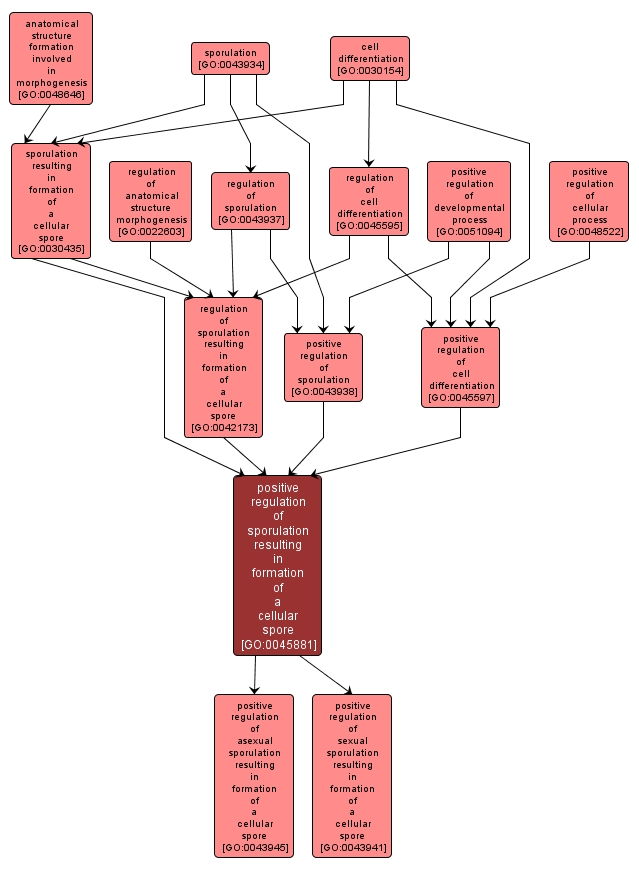GO TERM SUMMARY
|
| Name: |
positive regulation of sporulation resulting in formation of a cellular spore |
| Acc: |
GO:0045881 |
| Aspect: |
Biological Process |
| Desc: |
Any process that activates or increases the frequency, rate or extent of sporulation. |
Synonyms:
- activation of sporulation
- up regulation of sporulation
- stimulation of sporulation
- up-regulation of sporulation
- upregulation of sporulation
|
|

|
INTERACTIVE GO GRAPH
|














